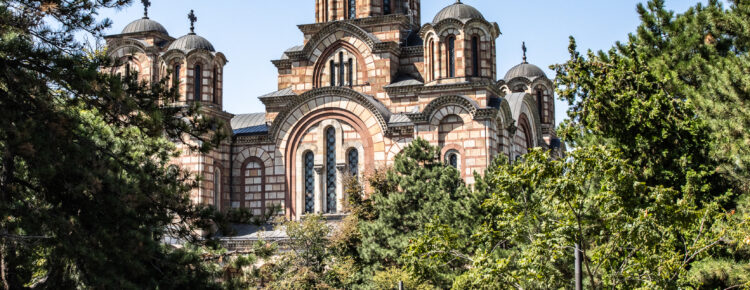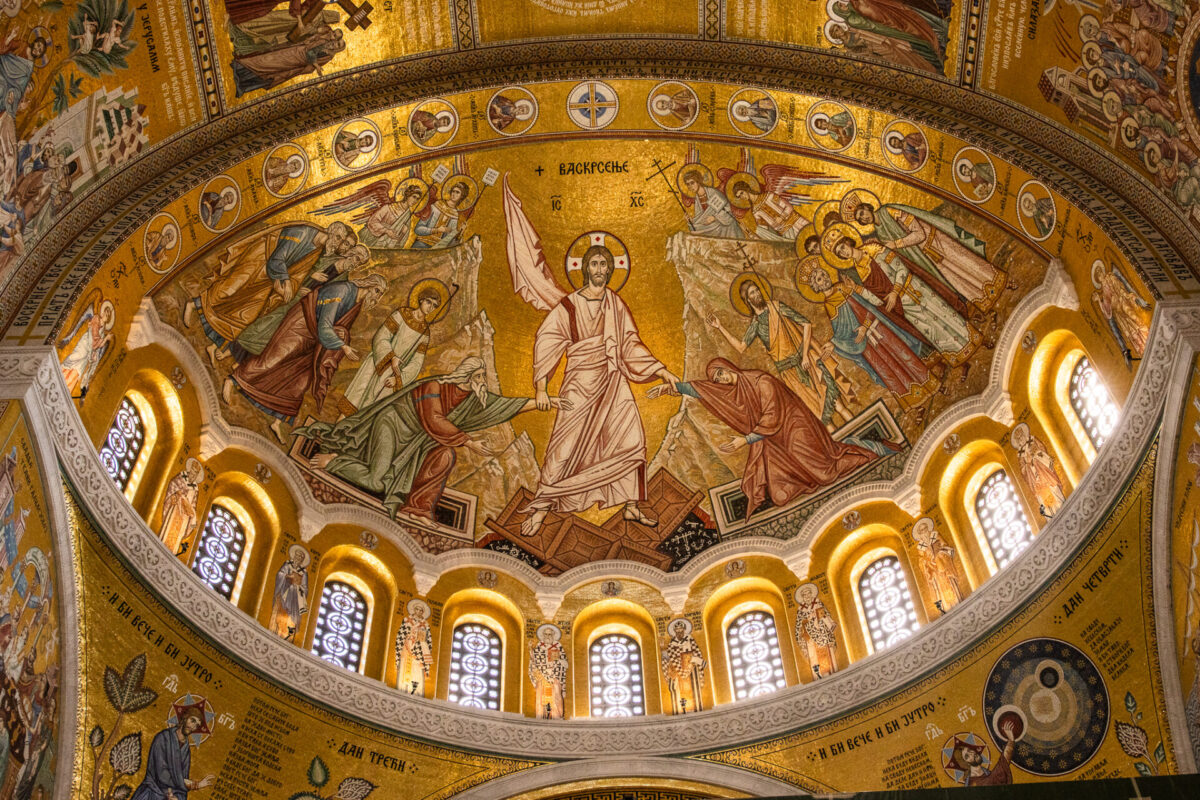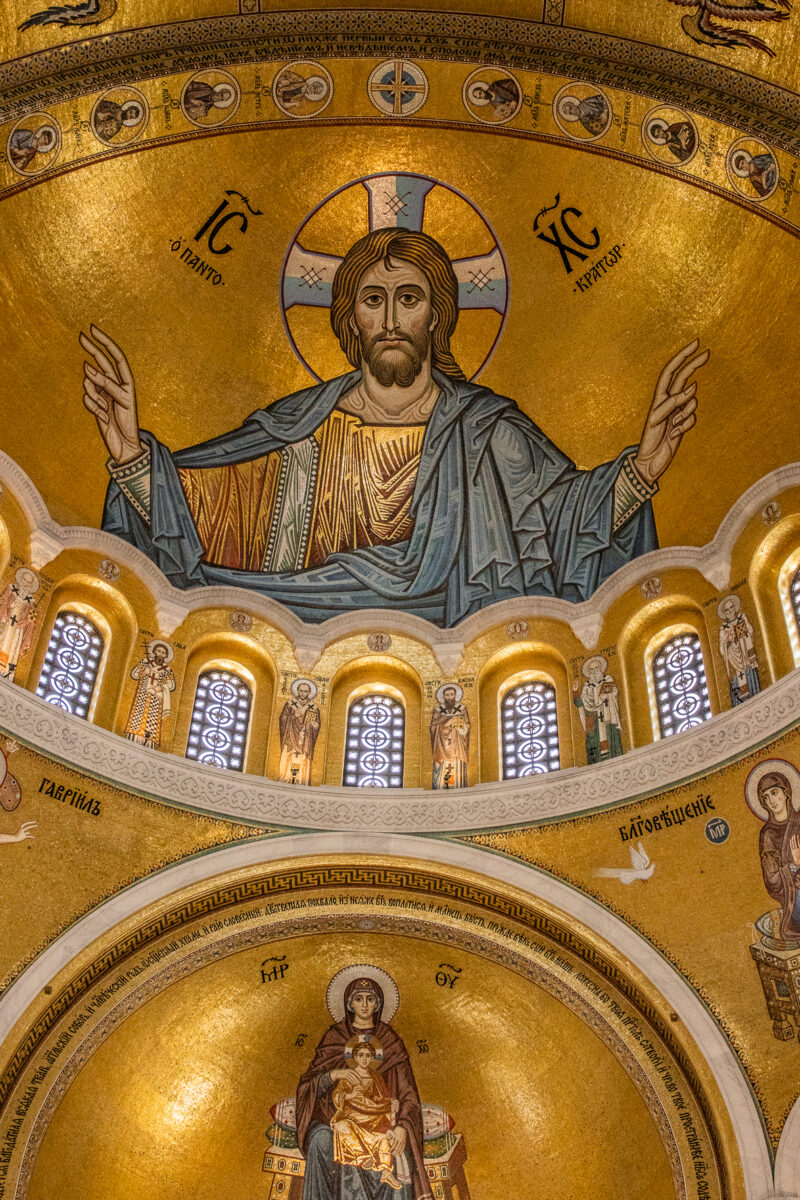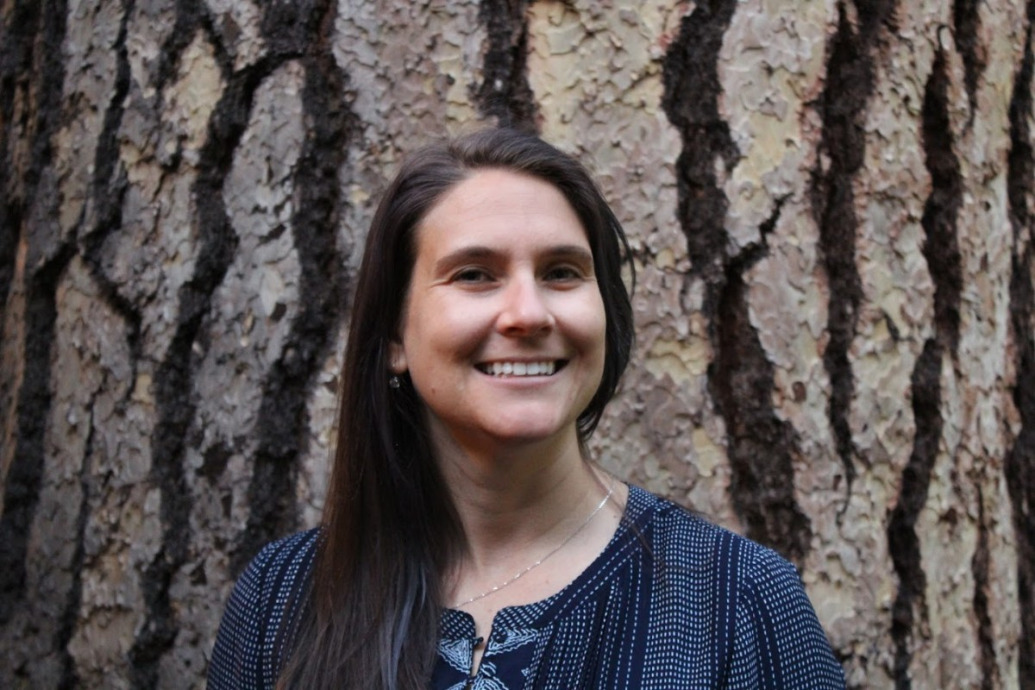The next morning we woke up around 9AM and moved at a leisurely pace before our Free Walking tour and day of Belgrade sightseeing. We enjoyed a lovely, complimentary breakfast at the hotel, which was conferred by my United Club card’s premium IHG status, and had a mix of British and Serbian cuisine. Serbians seemed to really enjoy their charcuterie, and there was always a selection of cold cuts and cheeses with various pickled and fresh vegetables on offer continuously throughout our stay. And sausages and meats. While Serbia was a good country for the meat eater, Belgrade was certainly not the worst for a vegetarian or omnivore, as it was a large and modern enough city to offer variety. The hotel breakfast also included the ability to order some sandwiches a la carte, such as a ham and cheese toastie and a croque madame (egg, ham, and cheese). The cold selection of fruits, yogurts, and accoutrements were also plentiful and fresh. We got into the mode of asking for Café Americano to get our coffee the way we liked it, which was decidedly American and not European. I did progress to cappuccinos and flat whites eventually.
That fueled us more or less throughout the day of Belgrade sightseeing, starting with the walking tour in Republic Square, adjacent to our hotel. As usual, we picked accommodations that afforded us easy access to the historic center and pedestrian areas. Our guide, Dušan, was there waiting with the orange umbrella, and a few other travelers when we arrived a few minutes before the 1030AM start. More people filtered in late, and the latest stragglers came after 15 minutes. I correctly guessed they were Portuguese, which is a fun guessing game I like to play to amuse myself operating on just snippets of language and looks. Dušan began by giving us the history of Republic Square, which was a main meeting point for the locals. Belgradians would say “let’s meet by the horse”, which was the prominent statue of Prince Mihailo Obrenović on horseback in the middle of the square.

Mihailo, across two rules (one short one as a boy and then a longer rule again when he had matured) had a prominent hand in erecting several of the buildings on Republic square in the mid 19th century and shepherded in a more modem and European era within the city, as an enlightened leader. He unfortunately died before seeing his crown jewel, the Belgrade Opera, completed. Here’s a view of the opera from our Belgrade sightseeing tour:
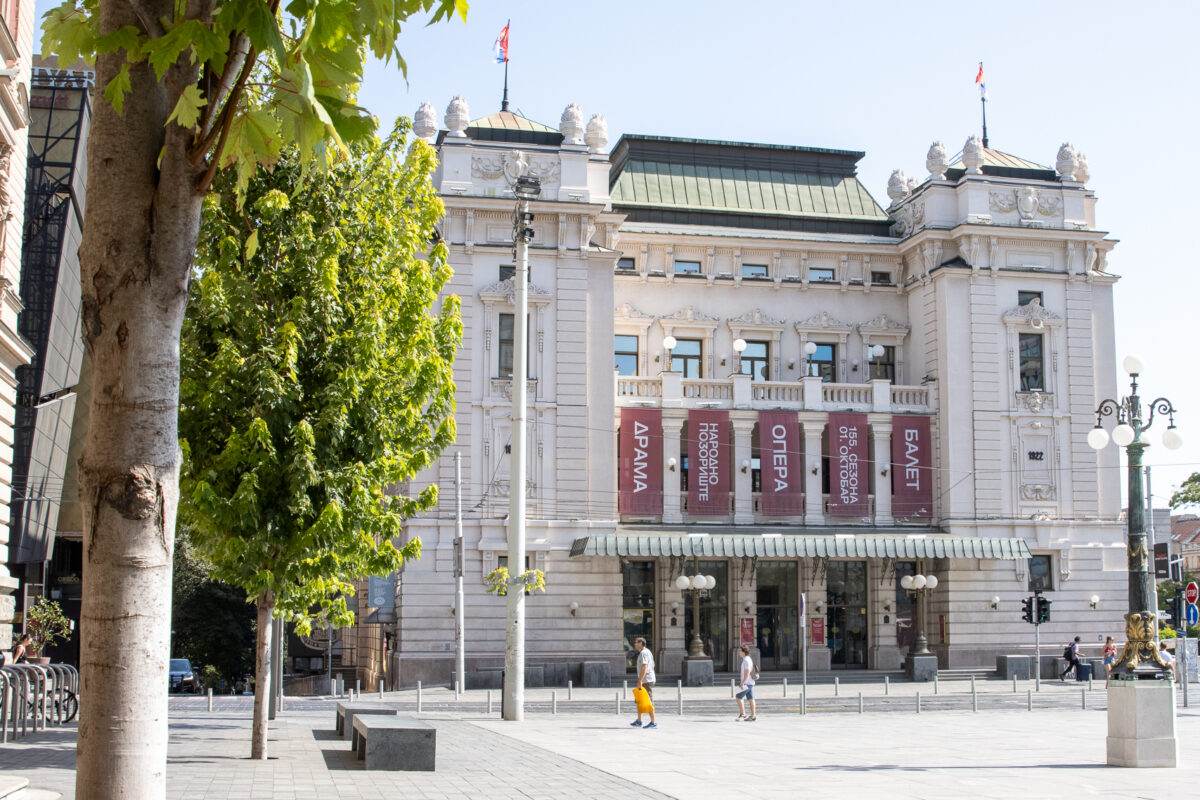
From Republic Square, we continued our Belgrade sightseeing adventure in front of the Hotel Moskva, also catty corner to Hotel Balkans, two of the fanciest hotels in the city where diplomats, politicians, and famous people frequented over the years. Dušan, for whatever reason, made an elaborate point several times that the only foreign dignitary who didn’t stay at the Hotel Moskva was Queen Elizabeth. Apparently there was so much peeping happening by curious locals looking through the glass from the outside that the hotel built a patio sitting area where one could go for food and drink, and more easily catch a glance of a famous person within. In modern times, it felt like less of a big deal.


Continuing our Belgrade sightseeing, we walked onward to the palace area, where Dušan described both the new and old palace on those grounds. The original palace, the old palace, is used as the mayor’s office in modern times and was built by the Karađorđević dynasty, the second of the two dynastic Serbian families in the 19th century (the first being the Obrenović which we had learned about in Republic Square).

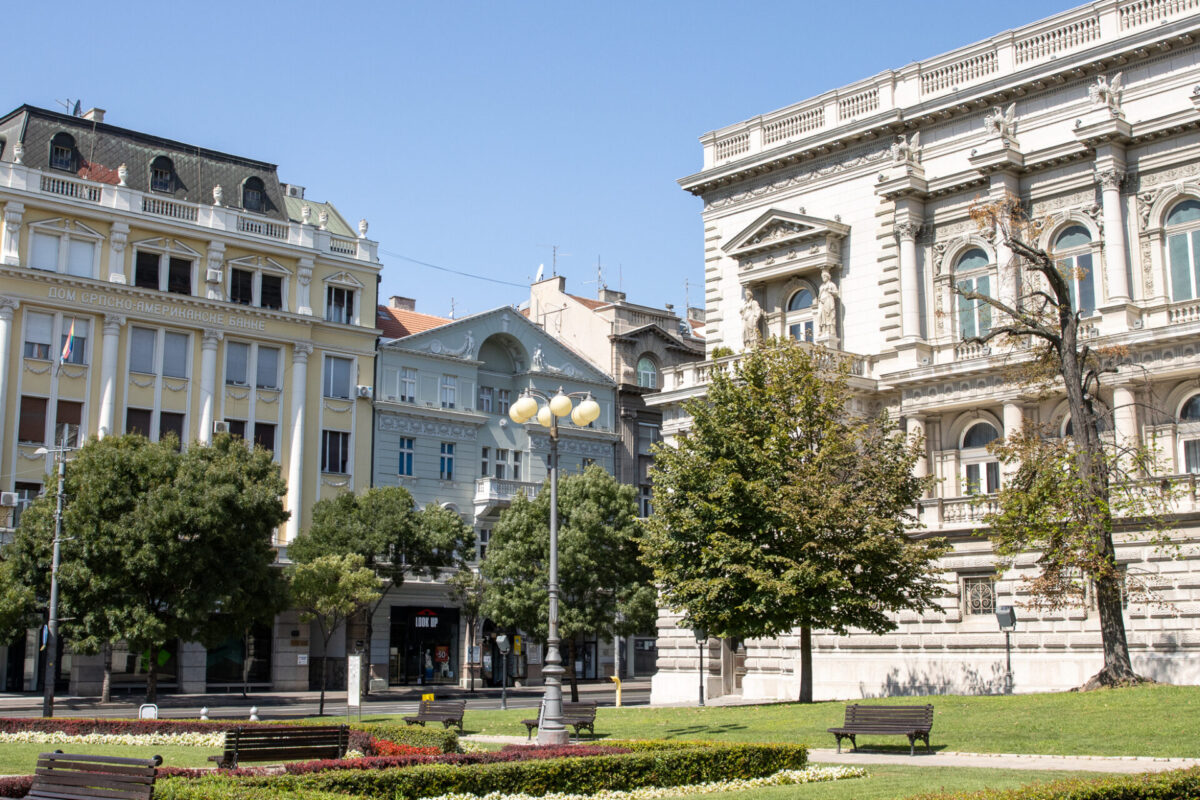

Of course, there were historical rulers dating back to the 12th century, but those had died off and by the 19th century there were two prominent families that filled the void and rotated in and out of power, and competed against one another in the pursuit of power – the Karađorđević and the Obrenović families.
During the mid 19th century, as the Ottoman Empire was crumbling and Serbian nationalism and the independence movement began to swell, there was an military uprising led by Karađorđević that was ultimately squashed, leading to many deaths and the family falling out of power – but did pave the way for eventual independence. The Obrenović family then was on the rising tide, having forged an alliance with the Turks to rule as part of a soft second uprising as a puppet monarch. They used the moment to wipe clean some of their enemies, and it was reported that people were thrown out of the windows of the old palace as a means of execution. They then also built the new palace right across the street, separated only by some small gardens.
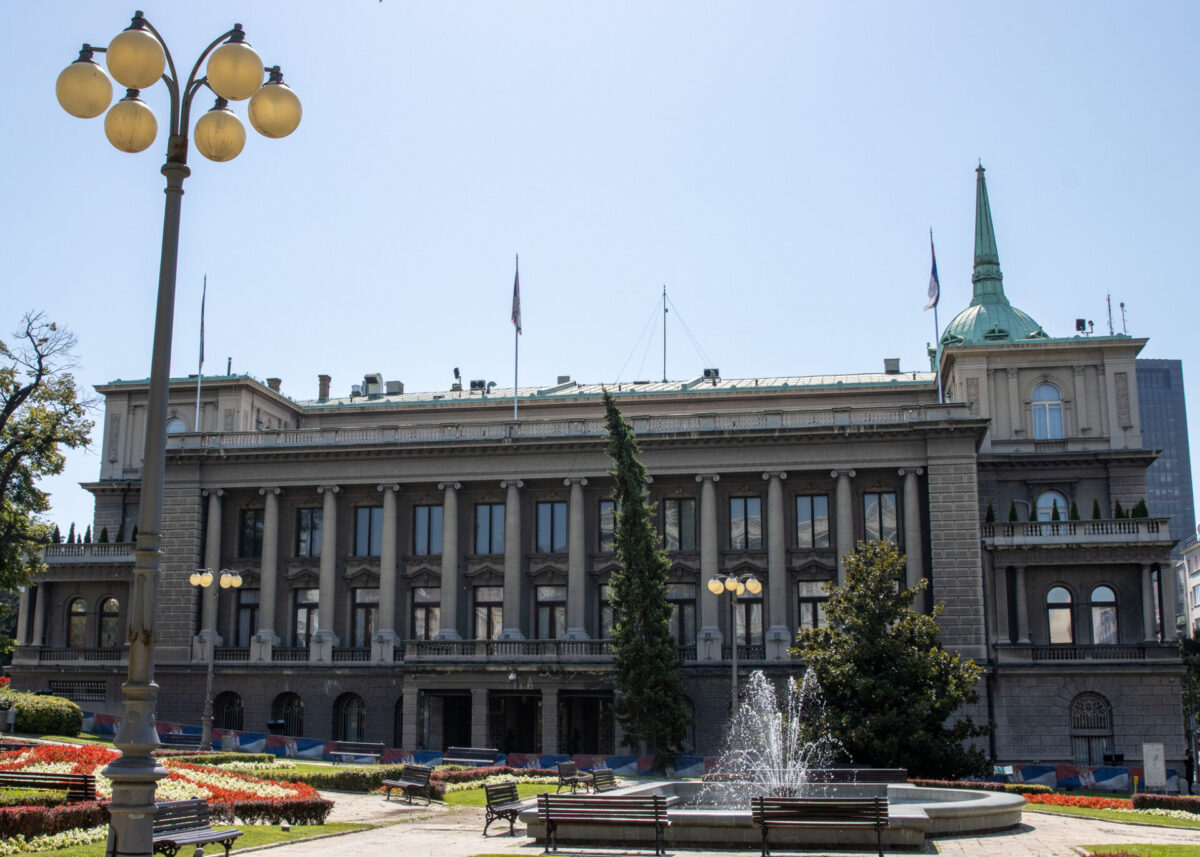
The Karađorđević military coup leader was put on house arrest, and was later assassinated by Obrenović’s godfather. This shepherded in the Obrenović rule which largely continued through World War I, when the family was unable to produce an heir, given the moment back to the Karađorđević dynasty until Tito came to power after World War II. At this point, the family was exiled to London and stayed until communism fell.
This snippet basically sums up the two modern Serbian dynastic houses:
“The House of Obrenović... ruled Serbia from 1815 to 1842, and again from 1858 to 1903. They came to power through the leadership of their progenitor Miloš Obrenović I in the Serbian Uprising of 1815–1817 against the Ottoman Empire, which led to the formation of the Principality of Serbia in 1817. The Obrenović dynasty were traditionally allied with Austria-Hungary and opposed the Russian-supported Karađorđević dynasty.”
-Wikipedia
Today, the Obrenović family perform ceremonial duties only, even to a lesser degree than the British ruling family, and are so far removed from Serbian culture that they barely speak the Serbian language. In a particular recent speech by the prince, he accidentally used the wrong grammatical case, causing the crowd to burst out in laughter, furthering the mockery of the ruling family by the people. More recently, Novak Djokovic stood in the old palace and addressed a crowd of 60,000 people in the square below to much fanfare, after winning Wimbledon.


While we were visiting Serbia, Nikola Jokic, the recent victorious NBA finals center of the Denver Nuggets, was also visiting his family home and riding his horse. We could picture him potentially, and was painted onto the Belgrade Tower right after the Nuggets won in June, but we did see his likeness on other buildings throughout the city while were we there. Many people also commented on my Jokic jersey and Brendan’s Denver Nuggets NBA champions shirt. It was fun to have Denver be on the map while we were enjoying Belgrade sightseeing.
Next we stopped at the parliament building across the street, and our guide explained the colloquial meaning behind the two statues with horses in the front. The status on the left, showing a man in front of a horse looking reluctant to go inside, symbolizes the journey of newly elected official who has not yet tasted power and who is just arriving into parliament, still uncorrupted. On the other hand, the statue of the man in front of the horse on the right side is shown being pushed out by the horse and actively not wanted to go, fighting to stay inside the building and in power. The symbolism could be about power corrupting, and power, once tasted, is hard to relinquish. Absolute power corrupts absolutely.
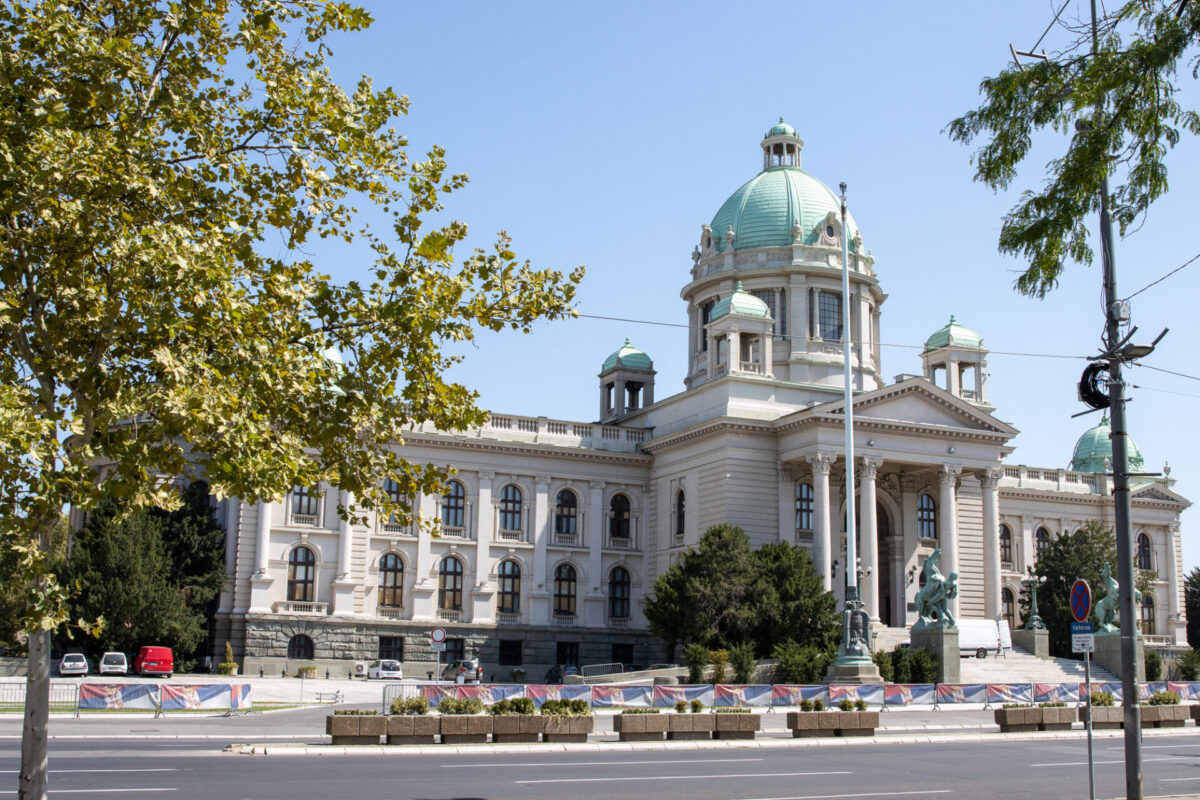
Talking about politics, Dušan described the government as a “democracy” but with a lot of nepotism and corruption, with career politicians often rotating between the parties to stay in power. Dušan gave the example of a progressive candidate ultimately switching to lead the conservative right-wing nationalist movement in order to continue their career. The economy was more or less capitalist now, with some basic services provided to citizens like healthcare and education, but tied more to work than to government service. He spoke longingly of the days under Tito where the country saw a lot of prosperity, and the divide between the rich and the poor flattened, with most of the country able to access a middle class lifestyle. There was less upside, but also less downside. We found it interesting that Dušan, a young man probably in his late 20s, who was never even alive during Tito’s rule, had nostalgia for that time period, no doubt from the memories provided to him by family members. Later on, in Bucharest, one of our guest lecturers, who also lived through communism, astutely pointed out that most of the older people’s nostalgia for the time period had less to do with communism or the time period itself, but more to do with the nostalgia for their own youth. We had never heard it been put so plainly before, but it made complete sense.
On the way to St. Mark’s Church, we briefly saw a monument to the Serbian soldiers who fought in World War I against the Austro-Hungarian empires and with the Allies. The small stones represented the stones soldiers carried with them from their villages so they could feel connected to their homeland.
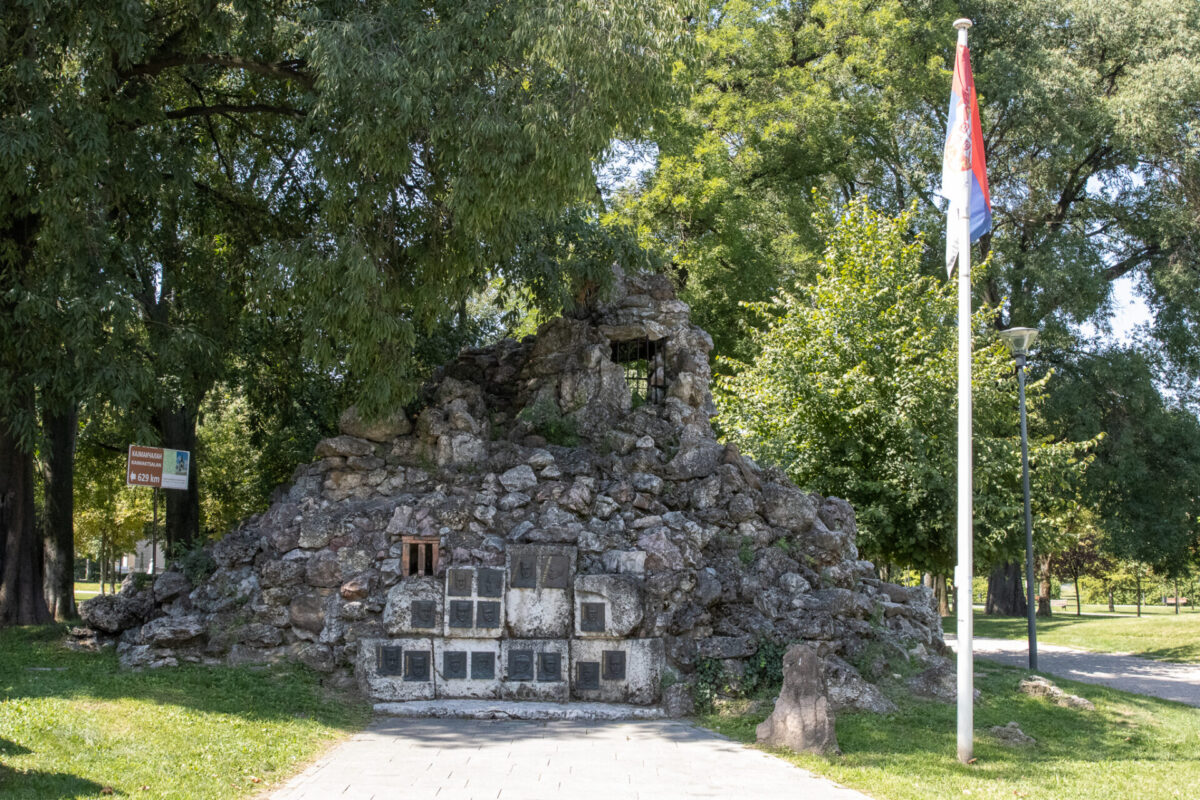
Then, we spent some time at St. Mark’s Church, the smaller and less magnificent of the two main Serbian Orthodox churches within Belgrade, which was built in the 1934s, and used in Communist times, which is why it is less ornate. You always enter an Orthodox church from west to east, and the eastern wall is the alter with the most ornate motifs and religious depictions. We went inside briefly to enjoy the art and architecture.
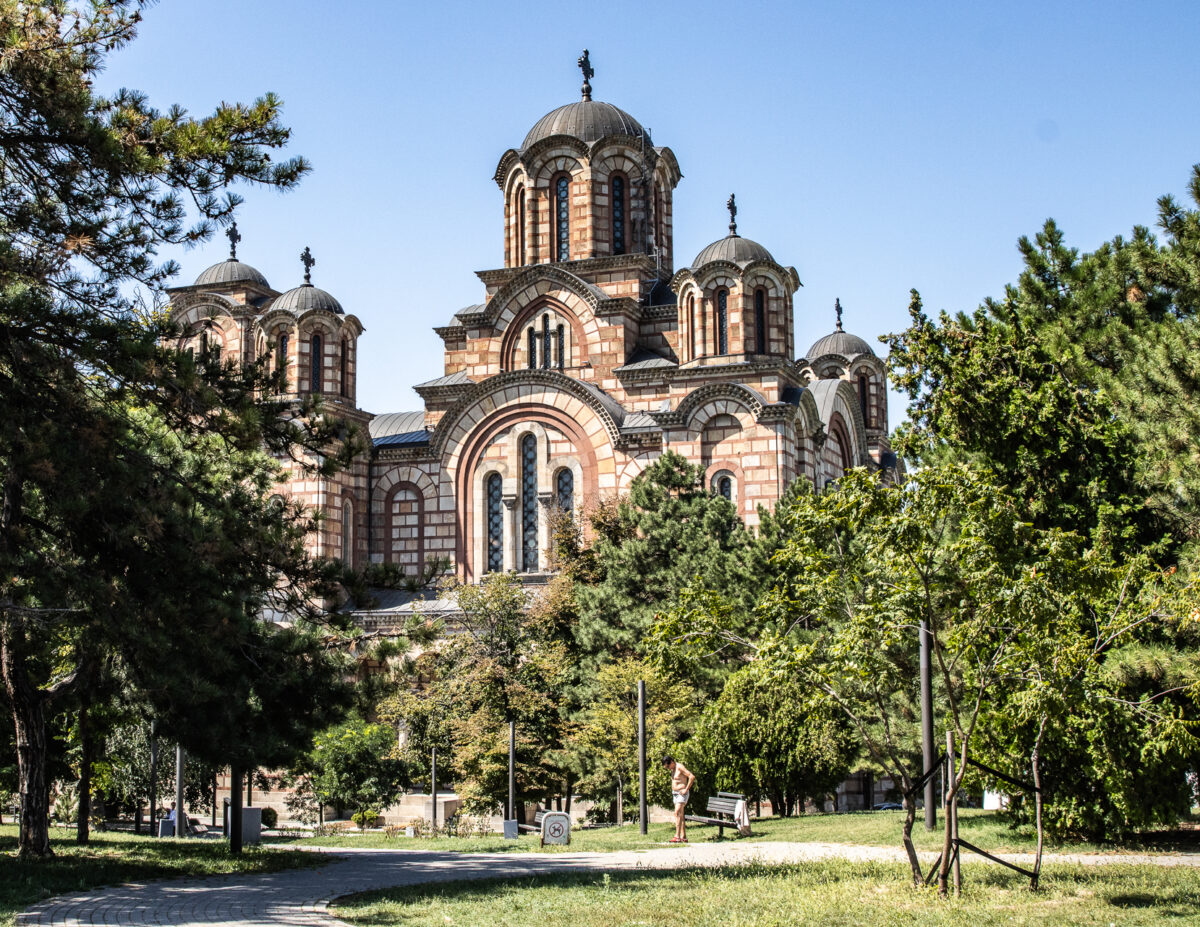
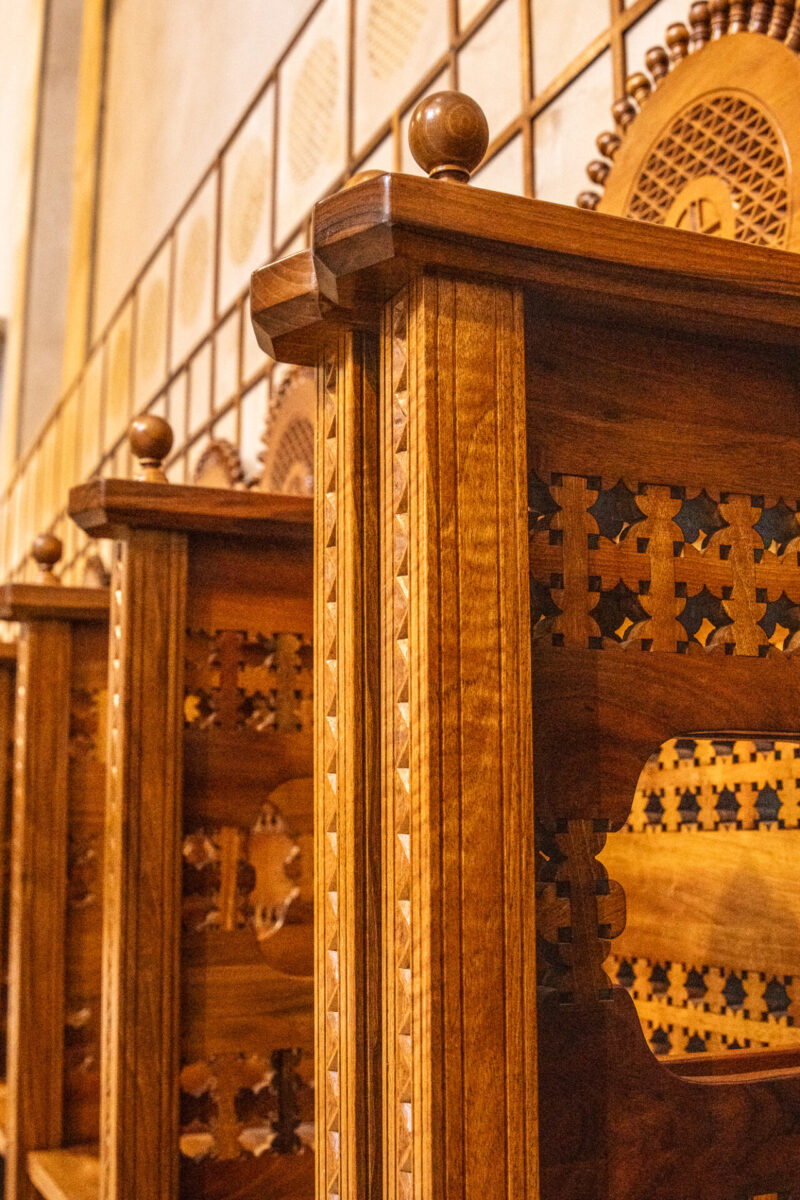
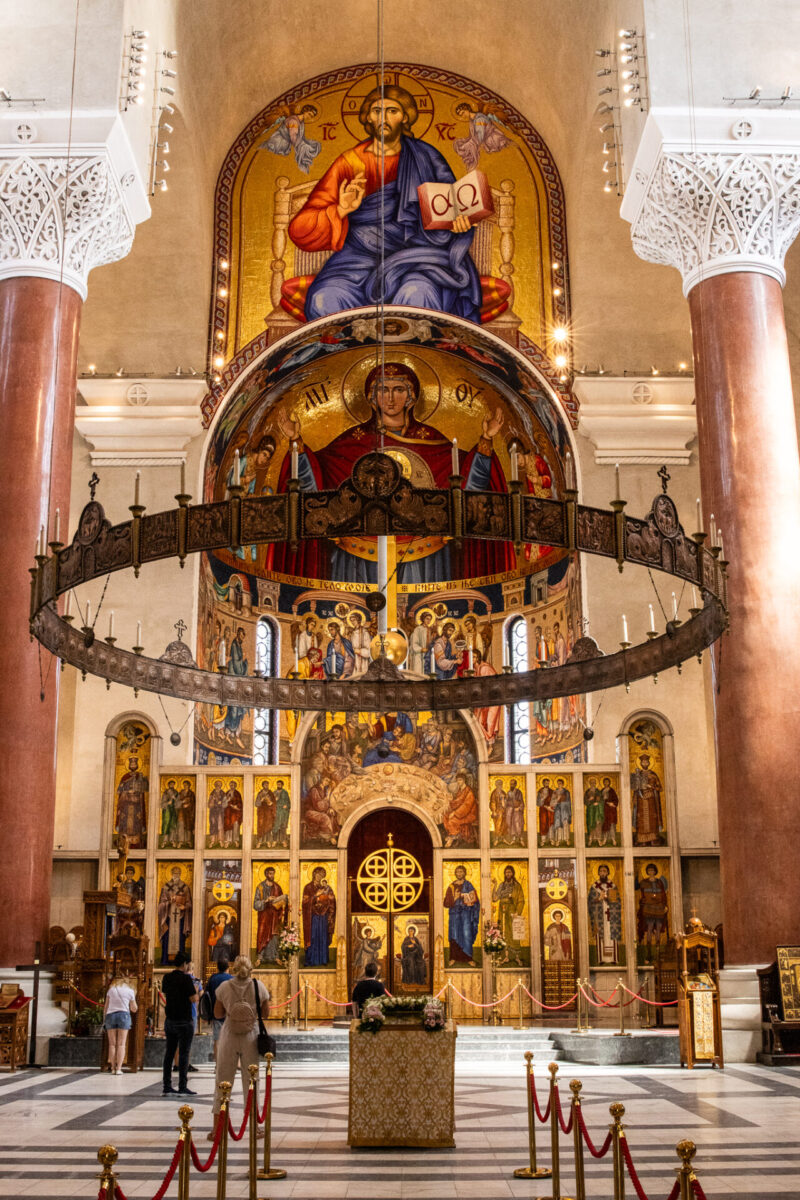
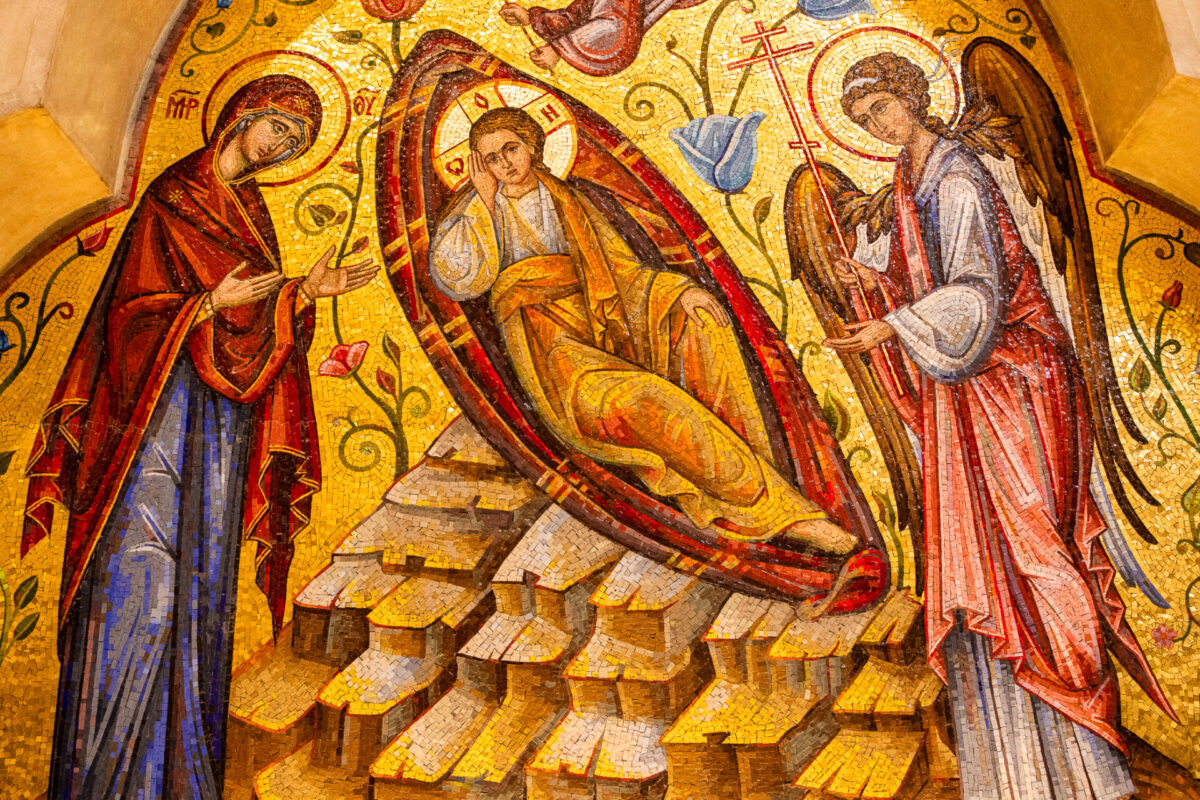
The most memorable stop came next, when we walked to one of the buildings bombed by NATO due to Serbia’s aggression in the Kosovo War.

The building was not what was interesting, though. Dušan shared his experience as a child living through the bombings, and how he remembers it so vividly even today. While not has traumatic as what we had heard in Sarajevo, the account was still haunting. Even though his village was on the opposite side of the city center that was bombed, he remembers seeing the missiles coming in and lighting up the sky clear as day in the dead of night, and illuminating everything around where he saw the bombed city in the distance perfectly, as well as his village completely lit up, as missiles continued to fall.
He also shared the sentiment of his countrymen that many Serbians are now somewhat anti-NATO as a result of the bombings in 1999, as they believe that there were terrorists on both sides, that Serbia was not the only perpetrator of heinous acts, and that the Serbian people were being punished for the acts of rogue military elements that were not sanctioned by the government or the people. He told a story of a Finnish forensic analyst who worked for the UN, and was brought to Kosovo after the war to determine what happened. She had concluded that, in a particular bombing perpetrated by Serbia on 40 Albanian Kosovars sheltering in place (all murdered by Serbian forces), that the Kosovars had no gun powder on their hands and therefore were civilians and not combatants, and therefore not terrorists. This was used as key evidence against Slobodan Milošević. However later, Dušan explained that the Finnish analyst later cast doubt on her previous findings, saying she was pressured to draw that conclusion, that gun powder may have been found, which would have cast the Kosovars as being militant combatants instead of civilians, bolstering the Serbian perspective that Kosovars also perpetrated acts of war and terrorism, casting doubt on NATO’s justification for the Serbian bombing under General Wesley Clark’s leadership.
This somewhat tied back to Dušan’s previous comments of nostalgia for Tito and Yugoslavia – a united southern Slavic state – and repainting historical events to bolster the justification of this perspective. It all seemed like revisionist history to us to justify some of Serbia’s actions under Milošević (who of course was tried and convicted as a war criminal responsible for genocide). War, of course, is always complicated, but it is mostly globally understand that Milošević, and the Serbian military at his direction, was the aggressor in the conflict, and that NATO’s bombing was in fact justified. Dušan did not necessarily share the perspective he was explaining, but he did want us to understand the various viewpoints of the Serbian people and how the situation was still complex many years later.
Later, we saw graffiti which started as a pro-Russian crossed out “Z” that could also represent anti-Zelensky, which was then painted over by the Ukranian flag, which was then tagged again with “Fuck NATO”. Dušan’s previous explanation of Serbia being not necessarily pro-Russian (and therefore not anti-Ukraine), but more anti-NATO, leading many Serbians to feel fairly neutral about the Ukraine ware, and having significant distrust of anything NATO is espousing or involved in. Dušan further explained that most Serbians tried to maintain friendly relationships with both Russian and Ukraine, therefore taking a more neutral position in the war. This surprised us given Serbia’s proximity to Ukraine, and Russia’s historical pattern of western expansionist ambition.

We ended the tour after briefly pausing at the Nikola Tesla Museum (we ended up not going), and finished our Belgrade sightseeing tour at the Church of Saint Sava. Saint Sava was the local patron saint (no connection with the Sava River) of Belgrade and is celebrated as the founder of the independent Serbian Orthodox Church. The church is constructed on the presumed gravesite of Saint Sava, after his coffin was placed on a pyre and burnt in 1595 by Ottoman Grand Vizier Sinan Pasha (there are several famous paintings about this in the National Museum that we saw the following morning, as this was deemed an act of sacrilege by the Serbians at the hands of the Ottomans). The church’s construction began in the 1930s after an architectural competition to rival the Hagia Sophia was held and a site was selected, but actually didn’t finish until just recently due to the intercession of communism. Saint Sava Church was the second largest Eastern Orthodox Church in the world, the largest Serbian Orthodox church, and was only recently completed and opened with much fanfare during COVID, creating several super-spreader events during its inauguration to the chagrin of the Serbian Ministry of Health. While the outside was impressive, we focused our photography on the inside to capture the gold leafed ornateness of the massive space:
With the tour ended, we walked back to the old town (in sweltering heat only made worse by the dense concrete of the city), and settled back in to the hotel room for a nap before dinner. We ended the day walking around Kalamegdon Park, a gorgeous shaded park at the edge of the old town pedestrian mall we were staying in, which housed the Kalamegdon Fortress and provided views of the intersection of the Sava and Danube Rivers. It was quite lovely and provided a necessary cooling effect and oxygen to the city.


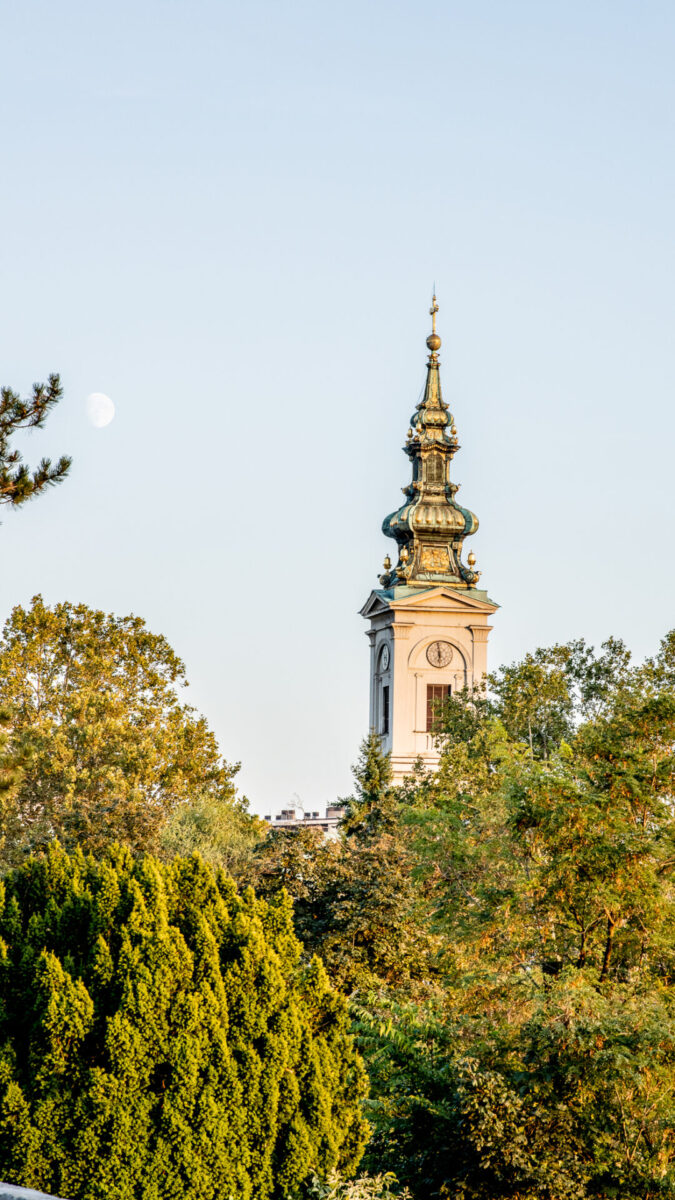
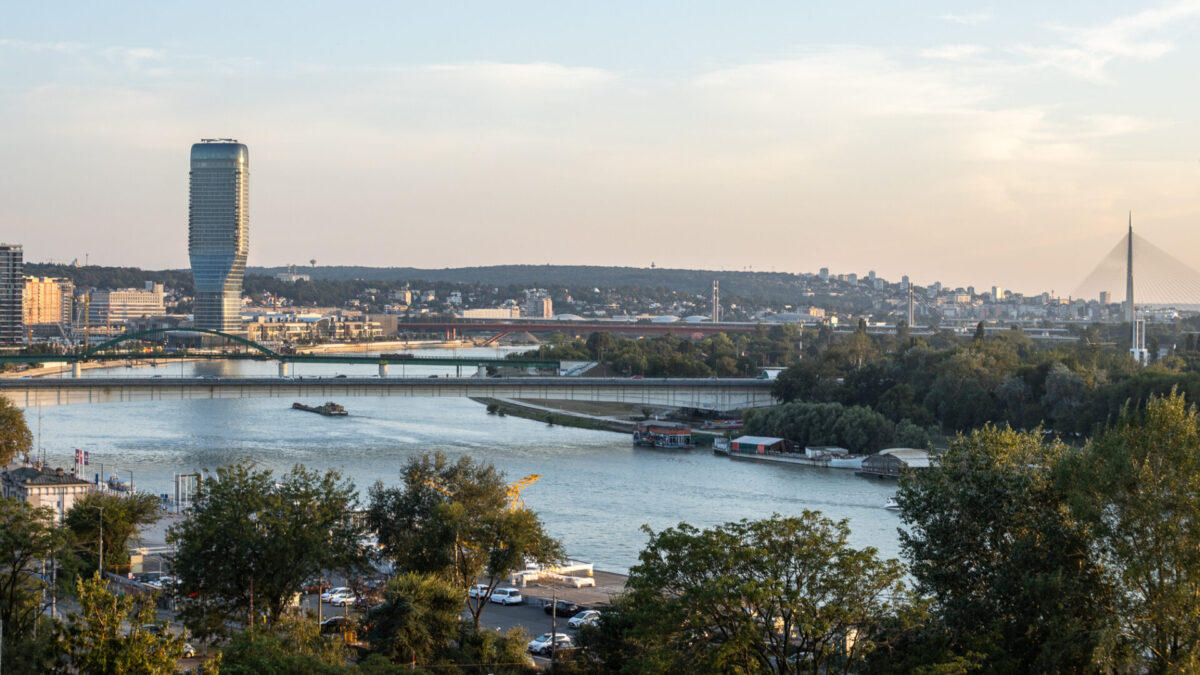

From there, we walked to the waterfront, the area our hotel receptionist said she liked to go for clubbing, and finally understood what she was talking about. On the east side of the Sava river, famous foreign restaurant chains owned by celebrity chefs lined the promenade, and on the west side docked riverboats offer a multitude of night club opportunities that Belgradians regularly frequented and enjoyed – a staple of their culture in fact. Neither Brendan nor I had any inclination to go – this seemed like a vestige of our younger years (and mostly not even then) – and were happy to imagine the drinking, dancing, and smoking happening inside late into the early morning.


Around 830PM we made it to our chosen dinner destination of a vegetarian restaurant called Radost Fina Kuhinjica, just up the stairs from a bar Duson had recommended, SFRJ (which we meant to try but ran out of time and energy). The restaurant was a lovely experience with a large garden outside that offered ample shaded seating, and good air conditioning inside and most importantly no smokers (and luckily none showed up throughout the evening). The waiter was a pleasant and helpful man who spent time explaining the menu to us, recommending his favorites (including the beer selection), letting us know which items they were not on offer. We enjoyed everything we ordered – starting with a mezze platter, two types of local craft IPAs (thankfully not that hoppy!), an eggplant ragu and a mushroom quesadilla. Stuffed and happy, we walked back to our hotel, glad to be done with the heat of the day.
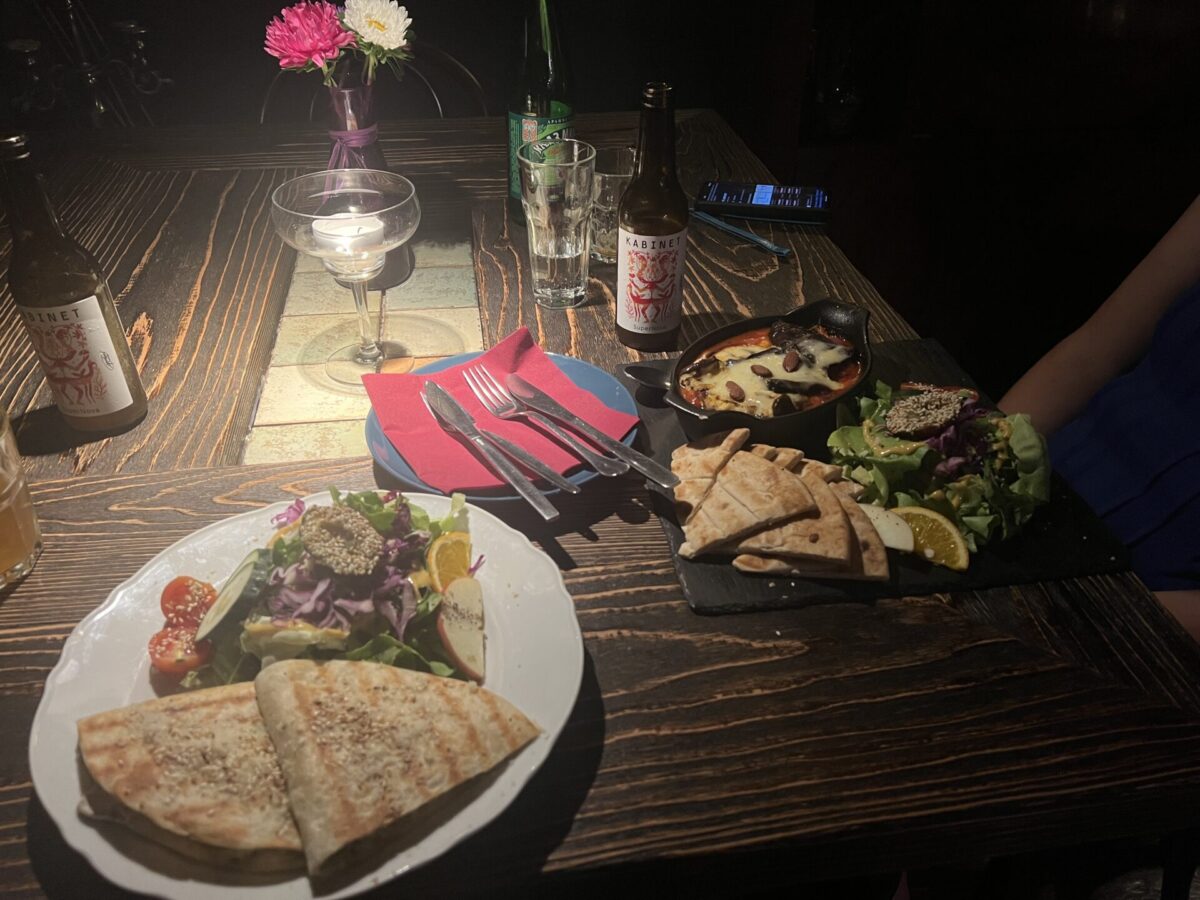
After a meandering walk back to the hotel, enjoying some cooler night air before the heat of the morning began once again along the way, we happily turned in for bed.
